An ultra-thin, skeletonized feat
Exclusively sold in the Piaget boutiques in March, the new Polo Skeleton will draw attention. A great opportunity for the manufacture to remind of its importance in the world of ultra-thin watches and of its talent in the art of movement chiselling.
Piaget found a superb idea to quietly make watch enthusiasts wait until the opening of the great online salon Watches & Wonders on April 7th. Indeed, the manufacture just unveiled its first major novelty of the year: an ultra-thin steel Polo model powered by a skeletonized calibre.
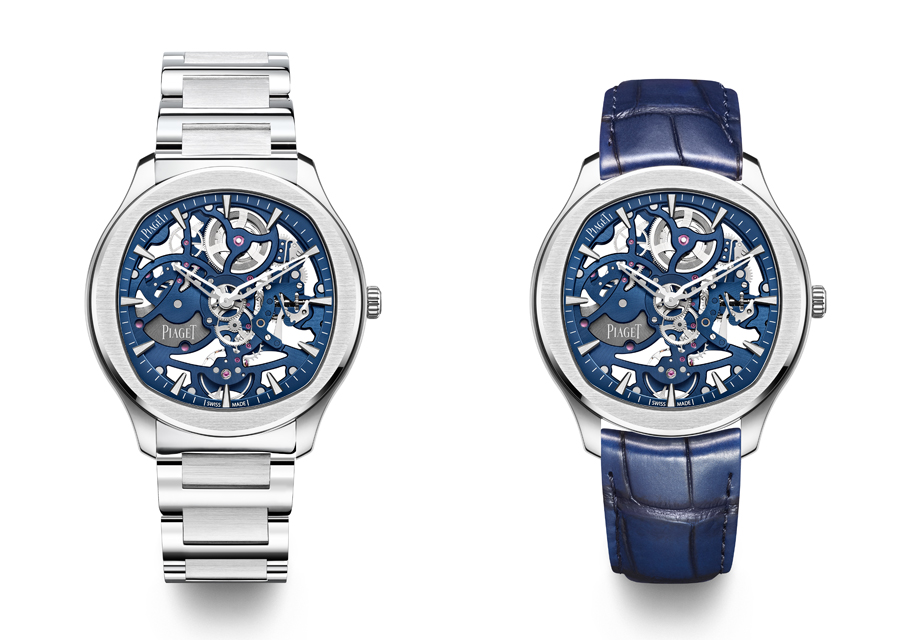
Ultra-thin Piaget watches: an historic know-how
Founded in 1874 in Côte-aux-Fées – a small village in Swiss Jura – the Piaget manufacture has mastered the design of ultra-thin movements since the late 1950s. First with the 9P mechanical movement in 1957 then the 12P automatic movement three years later. The expertise acquired through the years by the brand watchmakers allowed to push the boundaries of ultra-thin watchmaking time and time again… And to break world records with movements made with components thinner than a strand of hair!

Polo Skeleton, World’s thinnest movement
At Piaget, the quest of the infinitely small has a famous face and a well-known appearance: the Piaget ultra-thin movement are traditionally intended for the emblematic Altiplano watch. In 2012, an Altiplano model was equipped with the 1200S movement. A remarkable piece which minimal thickness – 5.34 mm for the case and 2.4 mm for the skeletonized movement – allowed it to win the title of World’s thinnest automatic skeleton movement and case.
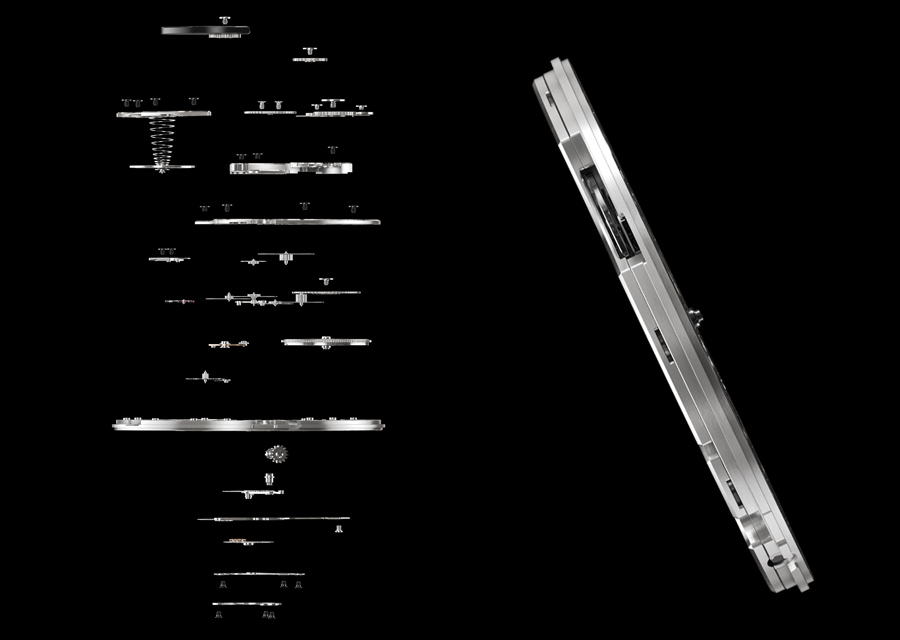
This is the same fascinating ultra-thin Piaget calibre that powers today the new model of the Polo collection, the sports luxury line of the brand. The Polo Skeleton is available in two versions, blue or slate grey (each for €29 400). Consult all the technical information on our detailed watch sheets: blue or slate grey version.
Short video clip on this small marvel…
Skeletonized movements, Piaget’s other favoured field
Piaget excels in the design of ultra-thin movements, a watchmaking complication in itself. But movement chiselling is another area in which the manufacture has been expressing its know-how for years.
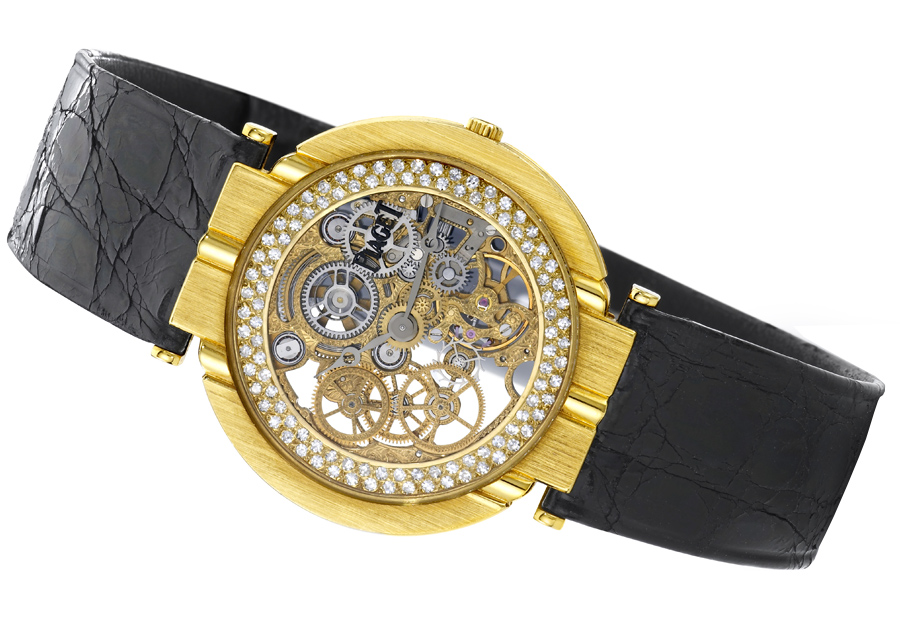
The first Piaget watches with skeletonized movements came out of the Côte-aux-Fées manufacture in the 1970s. Elegantly and minutely chiselled, they soon found their aficionados among anonymous collectors and celebrities. Jazz icon and enthusiast of mechanical wonders, trumpeter Miles Davis was one of the first to wear a skeletonized gold Piaget during his major performances.
Polo Skeleton: a watchmaking and aesthetic success
The Polo? In watchmaking, this is the name of a chic, sports model conceived in 1979, which draws its name from the eponymous equestrian sport, as elegant as exigent.
Perfect blend between seductive design and durable conception, Piaget’s Polo boasts a round case with a cushion-shaped bezel that seamlessly outlines the dial.
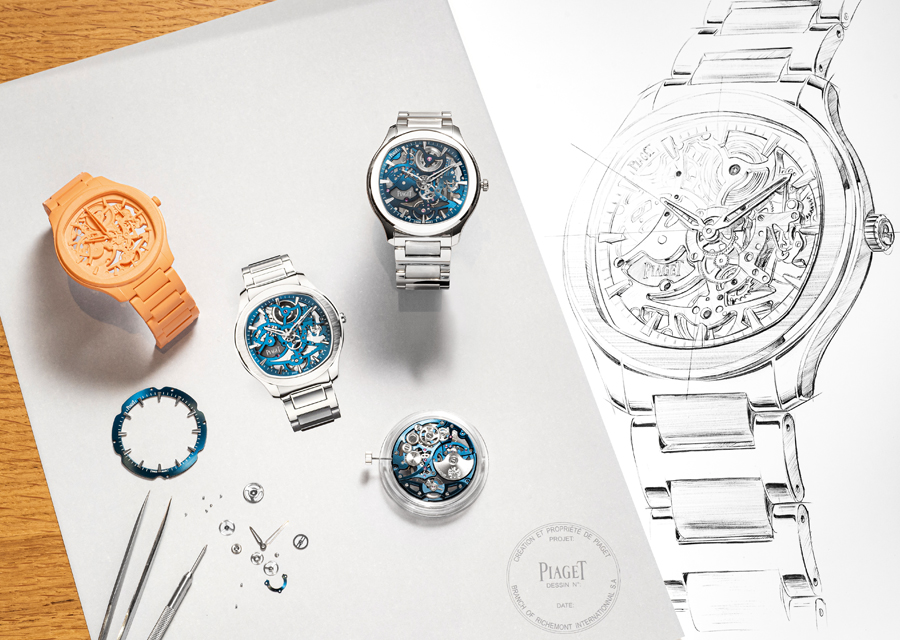
Ultra-thin enthusiasts will notice that the Polo Skeleton is slightly thicker than the 2012 Altiplano, with 6.5 mm. Yes indeed, but this new 42 mm of diameter Polo nevertheless fits right into the select club of the ultra-thin watches. It flaunts a slim figure that many watchmaking houses can only dream of creating. A feat that must be emphasized, since the Polo watch was not actually intended to be so slender.
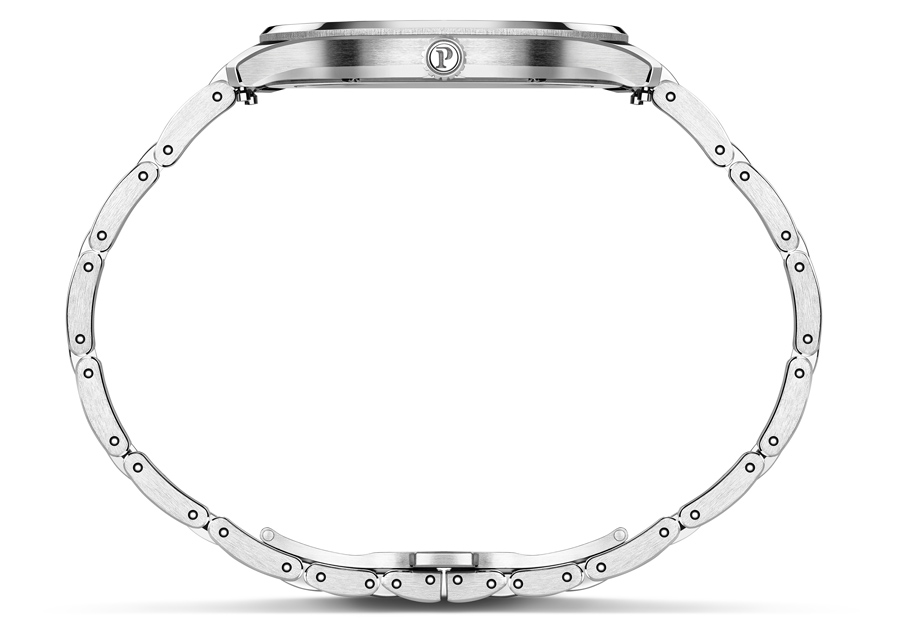
The manufacture designers and watchmakers employed all their talents to reduce by 30% the thickness of the Polo. They designed a perfect steel case, alternating between brushed and polished finishes, to house Piaget’s ultra-thin skeleton movement.
Calibre 1200S1, a modern mechanic lacework inside the Piaget Polo Skeleton
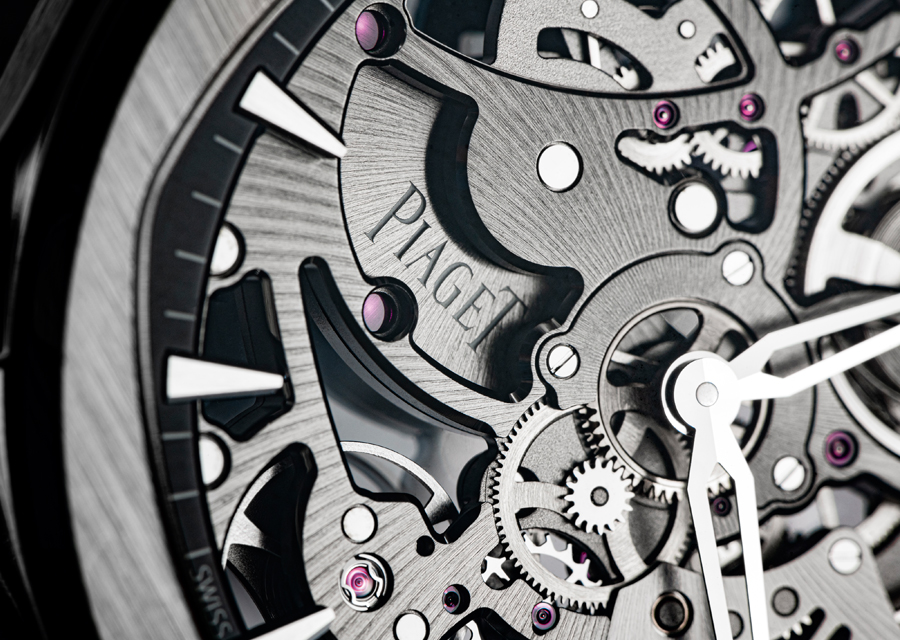
While making the components thinner and skeletonizing them are completely different techniques, they share a significant, ever-present constraint. Because the engineers must go to the very limits of the creation without reaching the breaking point that would irremediably endanger the structure of the movement. Trying to preserve robustness when the goal is to conceive an ultra-thin and skeletonized mechanism defies the laws of physics.
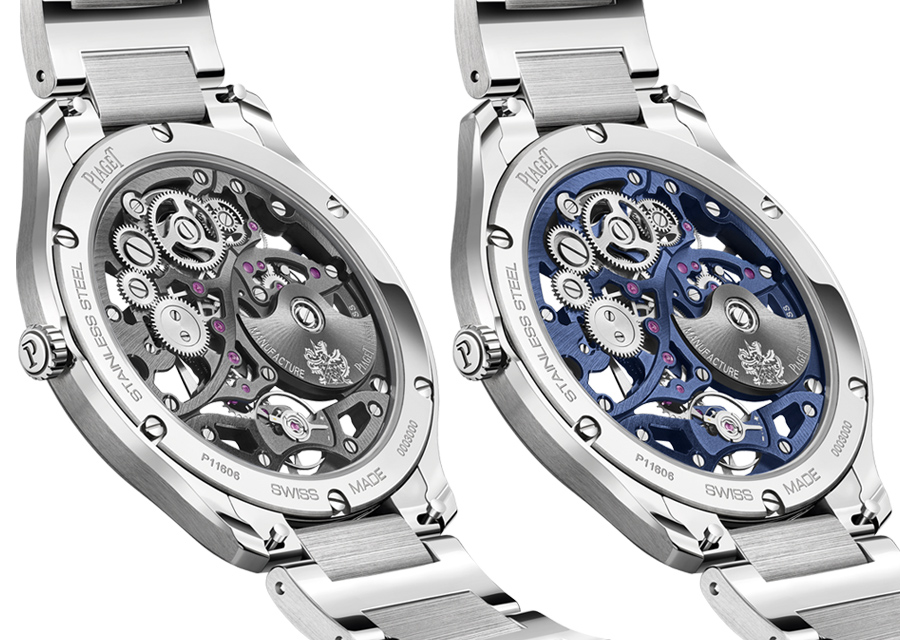
Needless to say, Piaget managed a real feat with its automatic movement 1200S1.
This 2.4 mm thick pure marvel of micro-mechanics exhibits on both sides the modern cut of its gears. A seductive platinum micro-rotor engraved with the Piaget’s coats of arms ensures its winding.
Piaget blue or slate grey: choose the chromatic pairing of your Polo Skeleton.

Stunning and modern lacework, Calibre 1200S1 is a fascinating, moving architecture. Carefully designed and assembled by master watchmakers, the movement boasts a main plate and bridges chamfered by hand and satin-brushed.
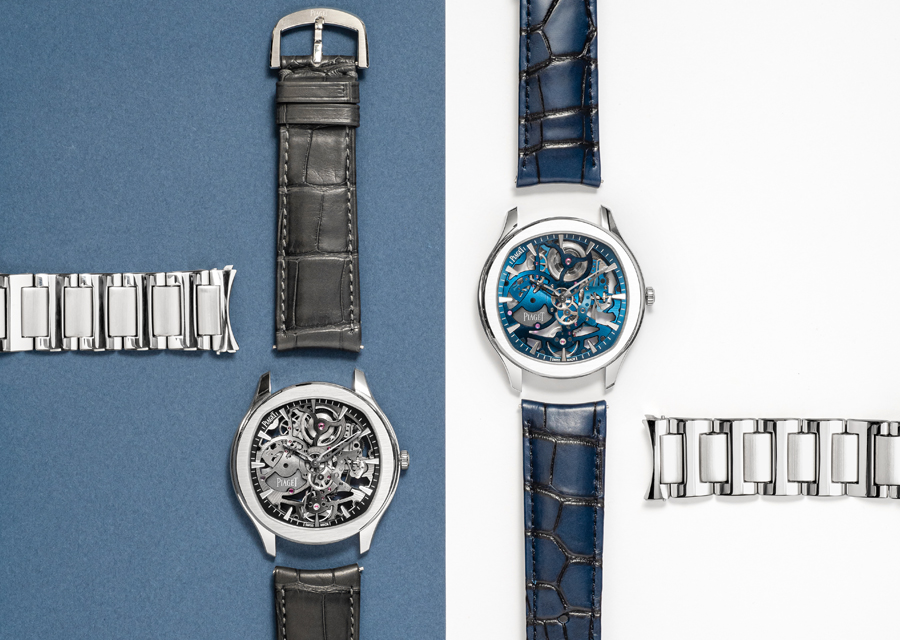
While staying true to the tradition and know-how of fine watchmaking, the movement plays the card of aesthetic modernity. Work of art with a very visual chiselling, this calibre also surprises by its colouring.
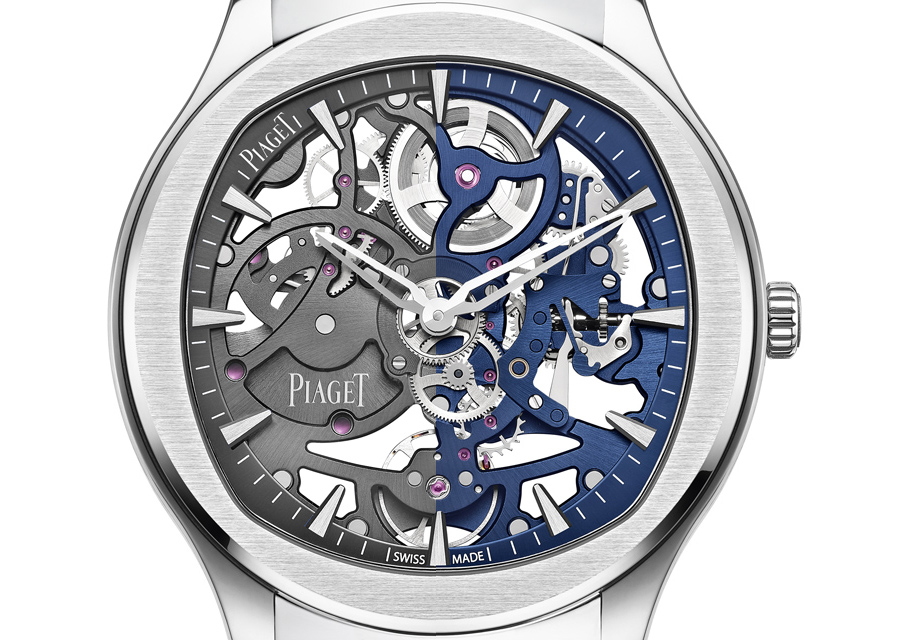
Piaget blue or slate grey, the colour is obtained through PVD coating (Physical Vapor Deposition), a process that bonds vaporized metals to a surface. This layer of only a few microns strengthens the pieces while adorning them in varying colours, depending on the material used.
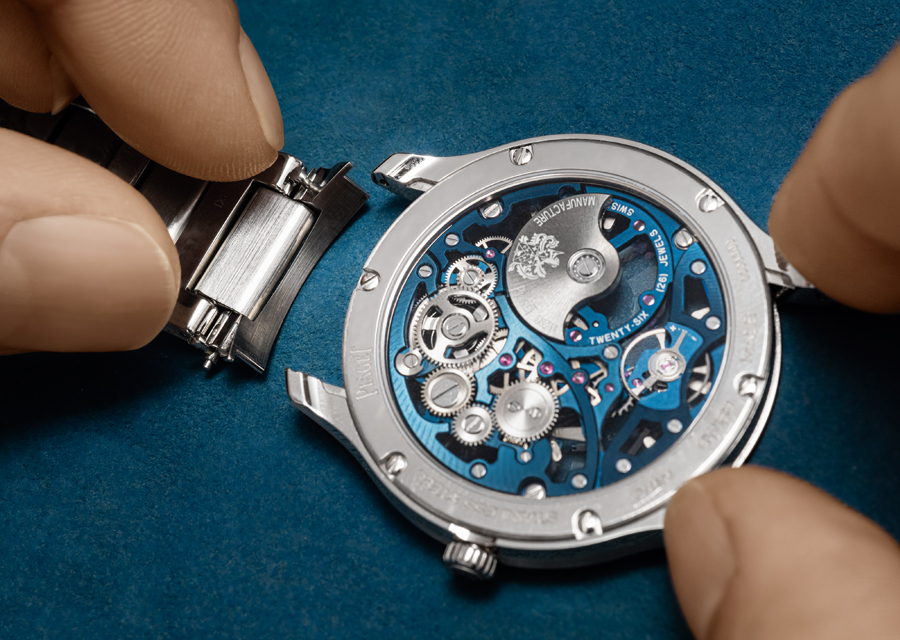
Last elegant touch: the watch is delivered with two switchable bracelets. One in steel, one in alligator leather… both matching the colour of the movement, of course! With this new Polo Skeleton, Piaget offers a stunning blend of two know-how perfectly mastered. This is a very contemporary timepiece which mechanical personality and modern, elegant lines will draw in enthusiasts of thinness and atypical beauty.
Our detailed data sheets on Polo watches.
PIAGET BOUTIQUES IN FRANCE
PIAGET BOUTIQUE PARIS – VENDÔME
16, place Vendôme
75001 Paris
01 55 35 32 80
PIAGET BOUTIQUE PARIS – RUE DE LA PAIX
7, rue de la Paix
75002 Paris
01 58 62 37 00
PIAGET BOUTIQUE MONACO – AVENUE DES BEAUX-ARTS
Avenue des Beaux-Arts
98000 Monaco
+377 93 50 44 16
Read also: